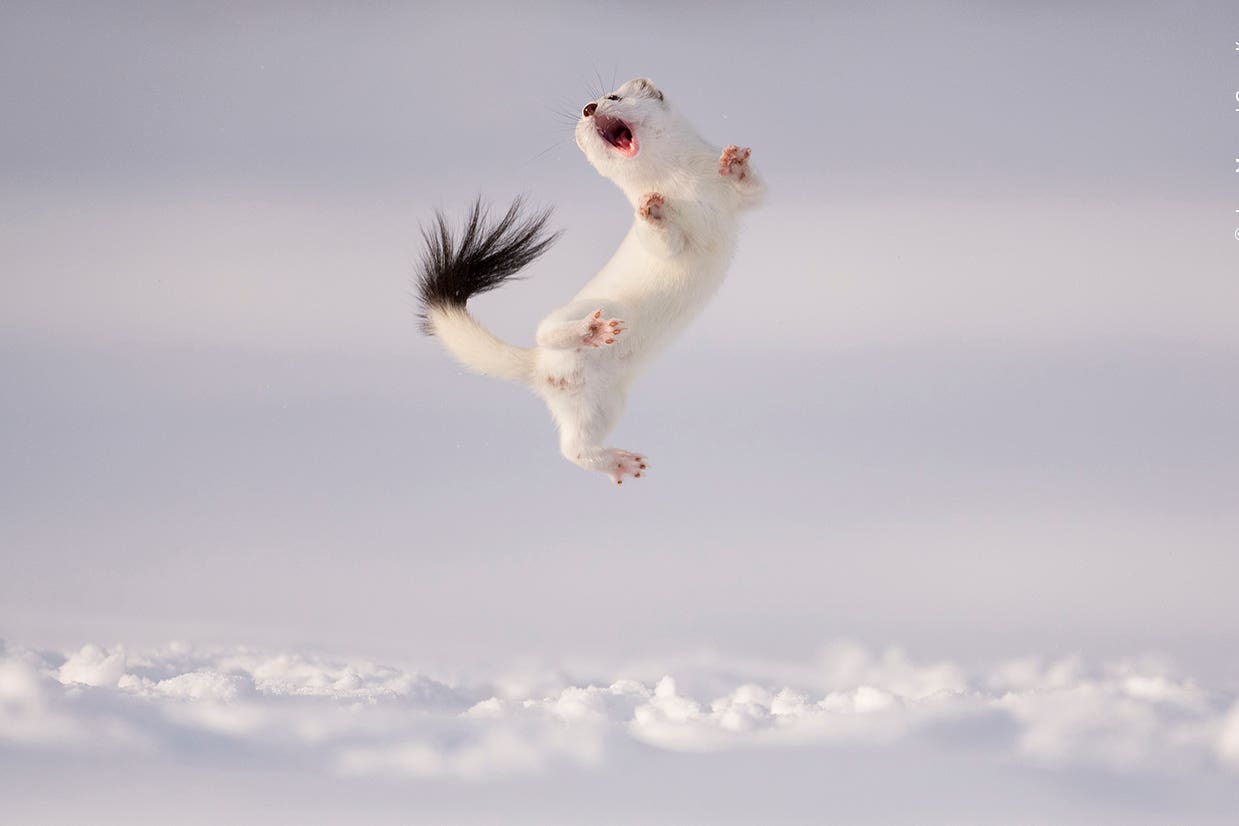First images for Wildlife Photographer of the Year competition revealed
More than a dozen highly commended images have been unveiled by the Natural History Museum for the 60th annual competition.

Your support helps us to tell the story
From reproductive rights to climate change to Big Tech, The Independent is on the ground when the story is developing. Whether it's investigating the financials of Elon Musk's pro-Trump PAC or producing our latest documentary, 'The A Word', which shines a light on the American women fighting for reproductive rights, we know how important it is to parse out the facts from the messaging.
At such a critical moment in US history, we need reporters on the ground. Your donation allows us to keep sending journalists to speak to both sides of the story.
The Independent is trusted by Americans across the entire political spectrum. And unlike many other quality news outlets, we choose not to lock Americans out of our reporting and analysis with paywalls. We believe quality journalism should be available to everyone, paid for by those who can afford it.
Your support makes all the difference.A stoat “dancing” over the snow, a David Bowie spider and a jaguar going for the kill are among the first images released from this year’s Wildlife Photographer of the Year.
More than a dozen highly commended images have been unveiled on Thursday by the Natural History Museum for this year’s competition.
It comes ahead of the winners being announced at a ceremony hosted by TV presenters and conservationists Chris Packham and Megan McCubbin on October 8.
Among the newly released images, which received highly commended awards in their categories, are Jose Manuel Grandio’s joyous image of a stoat jumping high into the air over fresh snow and young photographer Sasha Jumanca’s shot of two curious tawny owlets.
Randy Robbin’s photo of the frosted body of a deer on the forest floor was also unveiled as the first-ever awarded smartphone image.
A jaguar delivering a fatal bite to a caiman in the Pantanal in Brazil was captured by British photographer Ian Ford.
Meanwhile, Theo Bosboom’s image showed how mussels bind together to avoid being washed away from the shoreline in Sintra, Portugal.
Also among the 14 images that have been released are shots of lions mating with a backdrop of storm clouds in Tanzania, a Pallas’s cat staring down the lens as the moon sets in China, a jackdaw bringing stones to its nest in London, and a requiem shark in a final act of resistance in the bycatch of a ship in the South Atlantic.
An exhibition of the top 100 images submitted to the competition opens at the Natural History Museum in London on October 11, before going on a UK and international tour.
Kathy Moran, chair of the judging panel, said: “In this selection, you see species diversity, a range of behaviour and conservation issues.
“These images represent the evolution of the competition through the years, from pure natural history to photography that fully embraces representation of the natural world – the beauty and the challenges.”
To mark the 60th anniversary of the competition in 2024, the museum’s flagship exhibition will feature a timeline of key moments in its history.
This year’s competition attracted a record-breaking 59,228 entries from photographers of all ages and experience levels from 117 countries and territories.
Entries were judged anonymously by an international panel of industry experts on their creativity, originality and technical excellence.
A new award in both the young and adult competitions, called the Impact Award, has also been introduced this year to recognise a conservation success, a story of hope or positive change.
Dr Doug Gurr, director of the museum, said: “As we celebrate sixty years of Wildlife Photographer of the Year, we also celebrate the generations of visitors who have been inspired by the beauty and majesty of its images, and the millions of connections made with nature.”
“Over the decades, Wildlife Photographer of the Year has pushed the boundaries of wildlife photography as the competition evolved alongside technological advancements.
“But still today, the competition remains true to one of its founding objectives: ‘to enhance the prestige of wildlife photography in the hope that ultimately the awards would benefit animals ‘by creating greater public interest in them and in that all-important topic – conservation.'”
Wildlife Photographer of the Year is developed and produced by the Natural History Museum, London, supported by Associate Donor The William Brake Foundation.